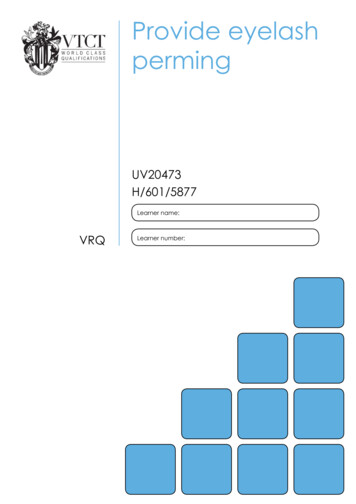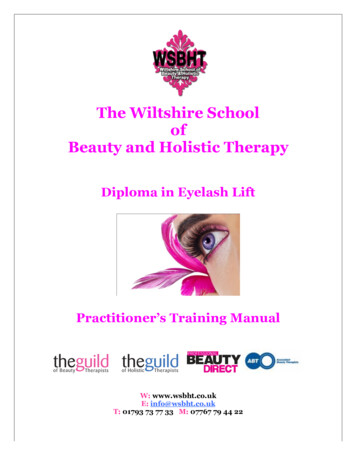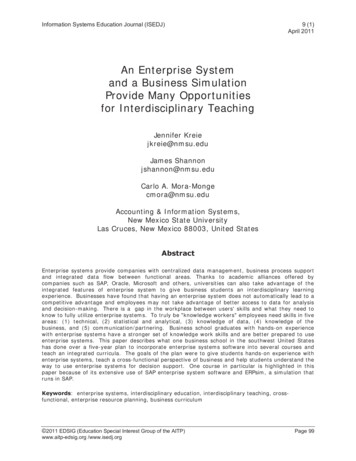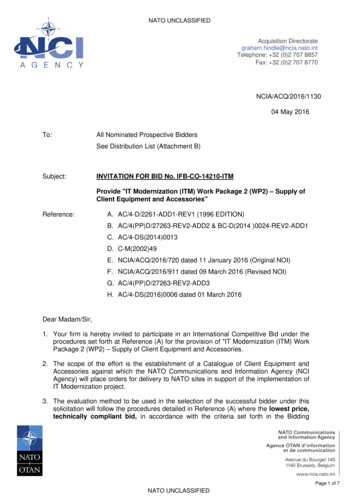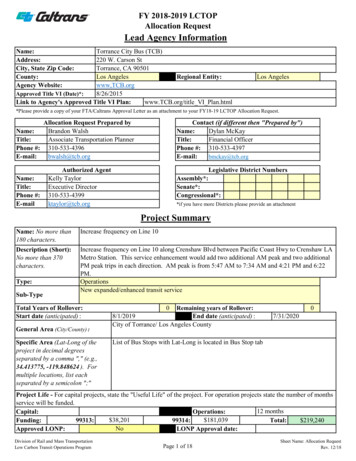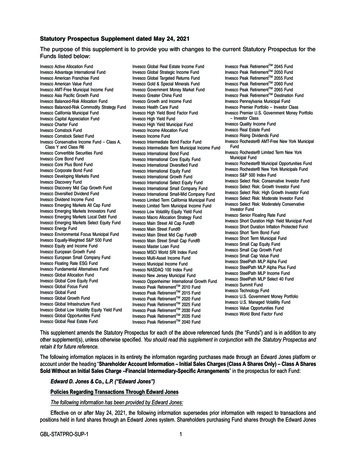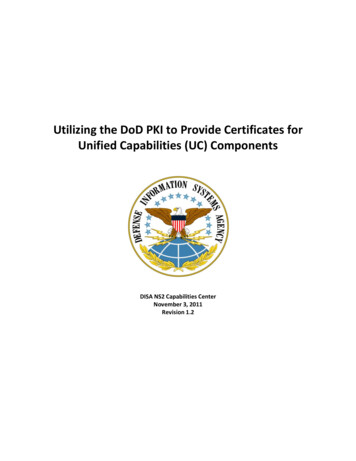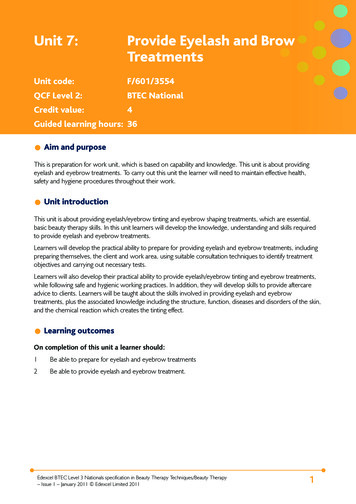
Transcription
Unit 7:Provide Eyelash and BrowTreatmentsUnit code:F/601/3554QCF Level 2:BTEC NationalCredit value:4Guided learning hours: 36Aim and purposeThis is preparation for work unit, which is based on capability and knowledge. This unit is about providingeyelash and eyebrow treatments. To carry out this unit the learner will need to maintain effective health,safety and hygiene procedures throughout their work.Unit introductionThis unit is about providing eyelash/eyebrow tinting and eyebrow shaping treatments, which are essential,basic beauty therapy skills. In this unit learners will develop the knowledge, understanding and skills requiredto provide eyelash and eyebrow treatments.Learners will develop the practical ability to prepare for providing eyelash and eyebrow treatments, includingpreparing themselves, the client and work area, using suitable consultation techniques to identify treatmentobjectives and carrying out necessary tests.Learners will also develop their practical ability to provide eyelash/eyebrow tinting and eyebrow treatments,while following safe and hygienic working practices. In addition, they will develop skills to provide aftercareadvice to clients. Learners will be taught about the skills involved in providing eyelash and eyebrowtreatments, plus the associated knowledge including the structure, function, diseases and disorders of the skin,and the chemical reaction which creates the tinting effect.Learning outcomesOn completion of this unit a learner should:1Be able to prepare for eyelash and eyebrow treatments2Be able to provide eyelash and eyebrow treatment.Edexcel BTEC Level 3 Nationals specification in Beauty Therapy Techniques/Beauty Therapy– Issue 1 – January 2011 Edexcel Limited 20111
Unit content1 Be able to prepare for eyelash and brow treatmentsPreparation: of therapist (personal hygiene/presentation, protective attire); of client (protective attire,secure hair, remove contact lenses, skin and hair preparation, cleansing)Preparation of work area: environmental conditions eg heating, lighting, ventilation, atmosphere; salon andclient requirementsClient consultation: consultation techniques (questioning, visual, manual, reference to client records);treatment objectives; assessing facial characteristics; tests (sensitivity test, tint patch test, interpret andrecord results); contraindications eg reaction to patch test, conjunctivitis, stye, blepharitis, viral infections,bruising, eczema/psoriasis, contact dermatitis, hypersensitivity; clear recommendations; agree treatmentplan; client confidentialityProducts, tools and equipment for treatments: eyebrow shaping (tweezers, eyebrow brush, antisepticsolution, aftercare solution); tinting (eyelash/eyebrow tint, peroxide, petroleum jelly/barrier cream,dappen dish, couch roll/linen, non-oily eye make-up remover); orangewood stick; cotton wool;headband; disposable gloves; tissues; sterilising dish; mirrorKnowledge of available eyelash and eyebrow treatments: eyebrow shaping; eyelash/eyebrow tint; lashapplication (individual, strip); eyelash perm2 Be able to provide eyelash and brow treatmentCommunication and behaviour: professional manner; communication (speaking, listening, body language,written); behaviour eg polite, tactful, client rapport; awareness of limits of own authority/responsibilityeg follow instructionsHealth and safety working practices: sterilisation and sanitation methods; safe use of tools and equipment;Health and Safety at Work Act (HASAWA) 1974; The Personal Protective Equipment (PPE) at WorkRegulations 1992; Control of Substances Hazardous to Health (COSHH) Regulations 2002; wastedisposalTreatments: positioning of therapist and client; use of products, tools, equipment and techniques to suitclient; ways of adapting treatment to suit client needs and facial characteristics eg choice of eyebrowshape/tint colour; complete treatment to client’s satisfaction; record results; contra-actions and responseeg redness and irritation, damp cotton wool compressEyebrow shaping: eyebrow shapes (arched, rounded, angular, straight); measuring; skin’s normal reactionto eyebrow shaping treatmentsEyelash and eyebrow tinting: tint colour eg black, brown, blue, grey; tint mixing; application; developmenttime; chemical reaction which causes tinting effectAftercare advice: homecare (ways of avoiding contra-actions, maintenance); retail opportunities (products,future services including repeat treatments)Anatomy and physiology: structure and function of skin; structure and function of hair; diseases anddisorders of skin and hair eg eczema, thin and thick hair growth, psoriasis, seborrhoea2Edexcel BTEC Level 3 Nationals specification in Beauty Therapy Techniques/Beauty Therapy– Issue 1 – January 2011 Edexcel Limited 2011
Assessment and grading criteriaIn order to pass this unit, the evidence that the learner presents for assessment needs to demonstrate thatthey can meet all the learning outcomes for the unit. The assessment criteria for a pass grade describe thelevel of achievement required to pass this unit.Assessment and grading criteriaTo achieve a pass grade theevidence must show that thelearner is able to:To achieve a merit grade theevidence must show that, inaddition to the pass criteria,the learner is able to:To achieve a distinction gradethe evidence must show that,in addition to the pass andmerit criteria, the learner isable to:P1prepare themselves, theclient and work area foreyelash and eyebrowtreatments[TW5, SM3]M1 explain the importanceof preparation and pretreatment activities foreyebrow and eyelashtreatmentsD1P2use suitable consultationtechniques to identifytreatment objectives[IE1, IE2, IE5]P3interpret and accuratelyrecord the results of testscarried out before treatments[IE4, RL1]P4provide clearrecommendations to theclient[EP2, EP4, EP5]P5select products, tools andequipment to suit clienttreatment needs[SM3]P6describe salon requirementsfor preparing themselves, theclient and the work areaP7describe the environmentalconditions suitable for eyelashand eyebrow treatments[IE5]P8describe different consultationtechniques used to identifytreatment objectivesP9describe the types of teststhat are carried out beforeproviding eyelash andeyebrow treatmentsEdexcel BTEC Level 3 Nationals specification in Beauty Therapy Techniques/Beauty Therapy– Issue 1 – January 2011 Edexcel Limited 2011assess pre-treatmentpreparations for eyebrowand eyelash treatments3
Assessment and grading criteriaTo achieve a pass grade theevidence must show that thelearner is able to:To achieve a merit grade theevidence must show that, inaddition to the pass criteria,the learner is able to:To achieve a distinction gradethe evidence must show that,in addition to the pass andmerit criteria, the learner isable to:P10 state the importance ofcarrying out tests before thetreatment and accuratelyrecording the resultsP11 describe the contraindicationsthat prevent or restricteyelash and eyebrowtreatments[IE5]P12 describe how to selectproducts, tools andequipment to suit clienttreatment needsP13 describe the types of eyelashand eyebrow treatmentsavailable and their benefits[IE2]P14 outline the types of teststhat are carried out beforeproviding an eyelash andeyebrow tinting treatmentP15 state the importance ofassessing facial characteristicsbefore carrying out eyelashand eyebrow treatmentsP16 communicate and behave ina professional manner[TW3, TW4, TW5, SM5,SM6, SM7]P17 follow health and safetyworking practices[SM4]P18 position themselves and theclient correctly throughoutthe treatmentP19 use products, tools,equipment and techniques tosuit client’s treatment needs[SM3]P20 complete the treatment tothe satisfaction of the client[RL3]4Edexcel BTEC Level 3 Nationals specification in Beauty Therapy Techniques/Beauty Therapy– Issue 1 – January 2011 Edexcel Limited 2011
Assessment and grading criteriaTo achieve a pass grade theevidence must show that thelearner is able to:To achieve a merit grade theevidence must show that, inaddition to the pass criteria,the learner is able to:To achieve a distinction gradethe evidence must show that,in addition to the pass andmerit criteria, the learner isable to:P21 record the results of thetreatmentP22 provide suitable aftercareadvice[EP2, EP3, EP4, EP5]P23 state how to communicateand behave in a professionalmannerP24 describe health and safetyworking practicesP25 explain the importanceof positioning themselvesand the client correctlythroughout the treatmentP26 explain the importanceM2 assess the suitability ofof using products, tools,selected products, tools,equipment and techniques toequipment, techniques andsuit client’s treatment needsaftercare advice for threedifferent clients.D2compare the suitability ofselected products, tools,equipment, techniques andaftercare advice for threedifferent clients.P27 describe how treatmentscan be adapted to suit clienttreatment needs and facialcharacteristicsP28 describe the normal reactionof the skin to eyebrowshaping treatmentsP29 state the contra-actionsthat may occur during andfollowing treatments and howto respond[IE5]P30 describe the chemicalreaction which creates thetinting effectP31 state the importance ofcompleting the treatment tothe satisfaction of the clientP32 state the importance ofcompleting treatment recordsP33 state the aftercare advice thatshould be provided[EP4]Edexcel BTEC Level 3 Nationals specification in Beauty Therapy Techniques/Beauty Therapy– Issue 1 – January 2011 Edexcel Limited 20115
Assessment and grading criteriaTo achieve a pass grade theevidence must show that thelearner is able to:To achieve a merit grade theevidence must show that, inaddition to the pass criteria,the learner is able to:To achieve a distinction gradethe evidence must show that,in addition to the pass andmerit criteria, the learner isable to:P34 describe the structure andfunction of the skin and hairP35 describe diseases anddisorders of the skin and hair.PLTS: This summary references where applicable, in the square brackets, the elements of the personal,learning and thinking skills applicable in the pass criteria. It identifies opportunities for learners to demonstrateeffective application of the referenced elements of the skills.Key6IE – independent enquirersRL – reflective learnersSM – self-managersCT – creative thinkersTW – team workersEP – effective participatorsEdexcel BTEC Level 3 Nationals specification in Beauty Therapy Techniques/Beauty Therapy– Issue 1 – January 2011 Edexcel Limited 2011
Essential guidance for tutorsDeliveryThis unit should be delivered in a Realistic Learning Environment (RLE), as detailed in Annexe F. Clientscan be friends and peers and does not mean treatment needs to be carried out on paying clients or withincommercial timescales.Delivery of this unit should be practical to engage and motivate learners. Tutors are advised to use a variety ofdelivery methods to facilitate this, such as videos and role play. It is essential that learners have a sound graspof the underpinning theory, as well as the skills required to perform the treatments.Learners should be taught about health and safety practices before tutors demonstrate treatments, especiallythe care that needs to be taken around the eye area as well as contraindications and contra-actions that mayoccur. Tutors must stress the importance of performing a patch test on clients before performing eyebrow/eyelash tinting.Tutors should demonstrate eyebrow shaping techniques, for example how to measure the eyebrows andadapt treatments to suit a client’s facial characteristics. Tutors should emphasis the importance of clientconsultations in identifying treatment objectives, and could use role play to achieve this. Learners need toappreciate the importance of advising and agreeing the treatment plan with the client, for instance there maybe occasions when the requested brow shape is not suitable for the client.Learners should also be taught how to minimise discomfort for the client, such as warming the skin beforebrow shaping. Learners should know the skin’s normal reaction to eyebrow shaping, as well as the suitableorder of performing eye treatments.After being taught how to perform treatments, learners should be given sufficient time to practise the requiredskills. Although learners are not required to perform the treatments within commercial timescales, theyshould be encouraged to perform the treatment within a realistic timeframe.Learners will need to know the underpinning theory of eyebrow shaping and eyebrow/lash tinting, forexample the chemical reaction which causes the tinting effect, related anatomy and physiology. This could bedelivered using textbooks, labelled diagrams and CD ROMs.It may be beneficial for learners to experience eyebrow shaping or tinting treatment themselves, so they gainan understanding of good practice and appreciate the sensitivity of the eye area. Learners should be giventhe opportunity to discuss and draw on their own personal experiences. Tutors should also discuss the rangeof eyelash and eyebrow treatments that are available, their associated benefits and increasing popularity andcurrent fashions.Edexcel BTEC Level 3 Nationals specification in Beauty Therapy Techniques/Beauty Therapy– Issue 1 – January 2011 Edexcel Limited 20117
Outline learning planThe outline learning plan has been included in this unit as guidance and can be used in conjunction with theprogramme of suggested assignments.The outline learning plan demonstrates one way in planning the delivery and assessment of this unit.Topic and suggested assignments/activities and/assessmentTutor introduction to the unit.Assignment 1: Eyebrow and Eyelash Treatments (P1, P2, P3, P4, P5, P6, P7, P8, P10, P11,P12, P14, P15, P16, P17, P18, P19, P20, P21, P22, M1, M2, P24, P25, P26, P29, P31, P32,P33, D1, D2).Tutor introduces to assignment brief.Professional ways of behaving and communicating, health and safety working practices and salon requirements.Pre-treatment procedures. Preparation (of therapist, client, work area). Consultation techniques, including tests,assessment of facial characteristics, contraindications, recommendations (demonstrations, role play).Products, tools and equipment. Client treatment needs/objectives.Eyebrow shaping and eyelash/eyebrow tinting workshops led by tutor demonstrations. Positioning. Techniques.Adapting treatments to suit different client needs (for example skin and hair) and treatment objectives. Clientsatisfaction.Post-treatment procedures. Recording results. Aftercare advice (homecare, retail opportunities), contra-actions.Assignment workshop(s).Assignment 2: Science of Eyebrow and Eyelash Treatments (P9, P13, P28, P30, P34, P35)Tutor introduces to assignment brief.Use of task sheets and diagrams/textbooks, models, CD ROMs relating to structure and function of skin and hair.Diseases and disorders of skin and hair.Chemical reaction which creates the tinting effect. Normal reaction of skin to eyebrow shaping.Eyelash and eyebrow treatments available and their benefits. Types of test carried out.Assignment workshop(s).Tutor recap of unit, using quizzes and games.AssessmentThe unit is assessed by the centre and will be subject to external verification by Edexcel.Achievement of the assessment and grading criteria should be evidenced through contextualised, vocationallyrelated experiences, with tasks specifically designed with the assessment and grading criteria in mind. Thetheoretical aspects of assessment for this unit can be achieved through learners completing centre-devisedassignments or through adaptation from Edexcel assignments where available. Practical assessment criteria willrequire observation and completion of relevant documentary evidence by the assessor.Assessment should be as holistic as possible, with assignments designed to cover multiple assessment criteria,even across units, where appropriate. Reference to grading criteria should be made in the assessmentdocumentation, to ensure the criteria have been met.P1, P2, P3, P4, P5, P16, P17, P18, P19, P20, P21 and P22 require learners to prepare for and performeyebrow and eyelash treatments, for at least three different clients with varying needs safely, for exampletreatment objectives, hair colouring. This must include an eyebrow shape, eyebrow tint and eyelash tint, eachon a different client. This includes the preparation of themselves, the client and work area, client consultationand post-treatment procedures, such as aftercare advice and recording results.8Edexcel BTEC Level 3 Nationals specification in Beauty Therapy Techniques/Beauty Therapy– Issue 1 – January 2011 Edexcel Limited 2011
Learners should be assessed when they have developed sufficient skills in eyebrow and eyelash treatments,following practice and feedback during unit delivery. It is essential that learners communicate and behaveprofessionally when performing their treatments, adhering to health and safety practices. The treatmentsshould be observed by the assessor and evidenced with a witness testimony. Photographs of learnersperforming treatments, or the client post-treatment, could be supplementary evidence.P6, P7, P8, P9, P10, P11, P12, P13, P14, P15, P23, P24, P25, P26, P27, P28, P29, P30, P31, P32, P33, M1,M2, D1 and D2 assess knowledge and understanding of the underpinning theory associated with providingeyebrow and eyelash treatments, learners could answer short written or oral questions (accompanied by awritten transcript). Alternatively, learners could produce a summary account of the treatments they providedto clients.For P34 and P35, learners are required to demonstrate their knowledge of relevant anatomy and physiology.This could be achieved via short-answer questions, either written or oral, accompanied by a writtentranscript.Alternatively, for P9, P13, P28, P30, P34 and P35 which assess knowledge of the science behind eyebrowand eyelash treatments, learners could produce a leaflet which advertises the benefits of treatments to clients.P13 requires learners to demonstrate their knowledge of the various eyebrow and eyelash treatmentsavailable beyond the scope of this unit, for example eyelash perming.It is essential that learners are given opportunities to achieve all the assessment and grading criteria throughthe assignments. The knowledge gained in this unit is embedded in all practical units so it is possible to crossunit assess.It is recommended good practice for tutors to hold regular assignment workshops where learners bring intheir assignment work and work on it, consulting with the tutor when necessary. Signed witness testimoniesand observation records must be retained for verification purposes including written transcripts of oralevidence. Supplementary evidence in the form of photographs and consultation record cards could alsobe provided.Programme of suggested assignmentsThe table below shows a programme of suggested assignments that cover the pass, merit and distinctioncriteria in the assessment and grading grid. This is for guidance and it is recommended that centres eitherwrite their own assignments or adapt any Edexcel assignments to meet local needs and resources.Criteria coveredAssignment titleP1, P2, P3, P4, P5, P6, Eyebrow and EyelashP7, P8, P10, P11, P12, TreatmentsP14, P15, P16, P17,P18, P19, P20, P21,P22, M1, M2, P23,P24, P25, P26, P29,P31, P32, P33, D1, D2P9, P13, P28, P30,P34, P35ScenarioAssessment methodPerform an eyebrowshaping, eyebrow tint andeyelash tint, each on adifferent client.Practical observation, withsigned witness testimony.Produce a report on thetreatments performed.Science of EyebrowCreate a leaflet advertisingand Eyelash Treatments the benefits of availableeyebrow and eyelashtreatments.Edexcel BTEC Level 3 Nationals specification in Beauty Therapy Techniques/Beauty Therapy– Issue 1 – January 2011 Edexcel Limited 2011Written report marked andauthenticated by the assessor.Leaflet, with text and pic
application (individual, strip); eyelash perm 2 Be able to provide eyelash and brow treatment Communication and behaviour: professional manner; communication (speaking, listening, body language, written); behaviour eg polite, tactful, client rapport; awareness of limits of own authori
